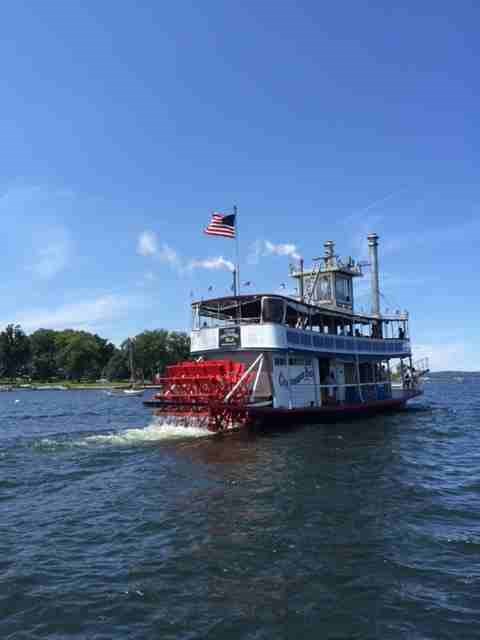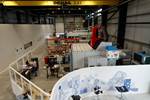Summer vacation and MEMS/nanotechnology
Revisiting the past, while the future is happening in my home town.

The Chautauqua Belle steam boat plies the waters of Chautauqua Lake on a perfect summer day, still going strong using old technology.
Vacations are wonderful things, offering respite from work and time to reflect. In my case, a family wedding gave me the chance to visit and reconnect with family in what I consider a nearly perfect part of the country, because I grew up there: Western NY state and northwestern PA. It struck me during my trip that old technology was going to be the theme: for instance, while in Pittsburgh, PA for my nephew’s wedding, I learned that our hotel in Southside was built on the site of a former steel mill. An old, huge iron vessel used in steelmaking had been unearthed during construction of the area, and was on display. Later, while boating on Chautauqua Lake, NY, US, I saw old technology in the form of the steam boat Chautauqua Belle, a fixture during the summer. I went back to my high school days, and spent time with old classmates. One, a farmer with long experience in agriculture who now raises beautiful draft horses on his farm, showed me old mill wheels he had unearthed nearby. He’s thinking of putting them to use to stone grind organic wheat, truly a centuries-old craft. I mused aloud about being about as far away from composites, CW magazine and high technology as I could be.
Then, one of my former classmates (himself a genius) mentioned that CW should write about a guy known to all of us, who grew up in the area, who, turns out (which I didn't know), is a brilliant researcher and the CEO at EngeniusMicro (Atlanta, GA, US). (Engenius has been acquired by Stanley Assoc. [Arlington, VA, US], which was in turn acquired by CGI [Montreal, Canada]). Dr. Michael Kranz, who got his Ph.D. at Georgia Tech in the field of micro-electro-mechanical systems (MEMS), has researched and developed micro-sensors for a wide array of applications, including structural health monitoring of composites. Here’s a sentence lifted from his Georgia Tech dissertation: “The objective of this research was to develop arrays of microfabricated capacitive resonant acoustic sensors, using electret materials [permanently polarized dielectric materials] as a permanent voltage bias, for the spectral decomposition of acoustic pulses such as those seen during impact events.” His company performs design and simulation of MEMS and nano-scale devices, in addition to developing fabrication process flows and performing device characterization. It looks at nano-scale developments related to environmental sensing devices, energy harvesting systems, and miniature energy storage components. Rapid prototyping using 3D printing is part of EngeniusMicro’s toolbox, as is additive manufacturing, assembly, and characterization. Here’s a link to the company’s Projects page: http://www.engeniusmicro.com/projects/
Pretty high-tech stuff from a guy who grew up in rural Western New York, among the dairy farms, draft horses, mill stones and steam boats on the lake.
Related Content
-
Bio-based, fire-resistant composites become mainstream
Projects use Duplicor prepreg panels with highest Euroclass B fire performance without fire retardants for reduced weight, CO2 footprint in sustainable yet affordable roofs, high-rise façades and modular housing.
-
Plant tour: Hexagon Purus, Kassel, Germany
Fully automated, Industry 4.0 line for hydrogen pressure vessels advances efficiency and versatility in small footprint for next-gen, sustainable composites production.
-
All-recycled, needle-punched nonwoven CFRP slashes carbon footprint of Formula 2 seat
Dallara and Tenowo collaborate to produce a race-ready Formula 2 seat using recycled carbon fiber, reducing CO2 emissions by 97.5% compared to virgin materials.



